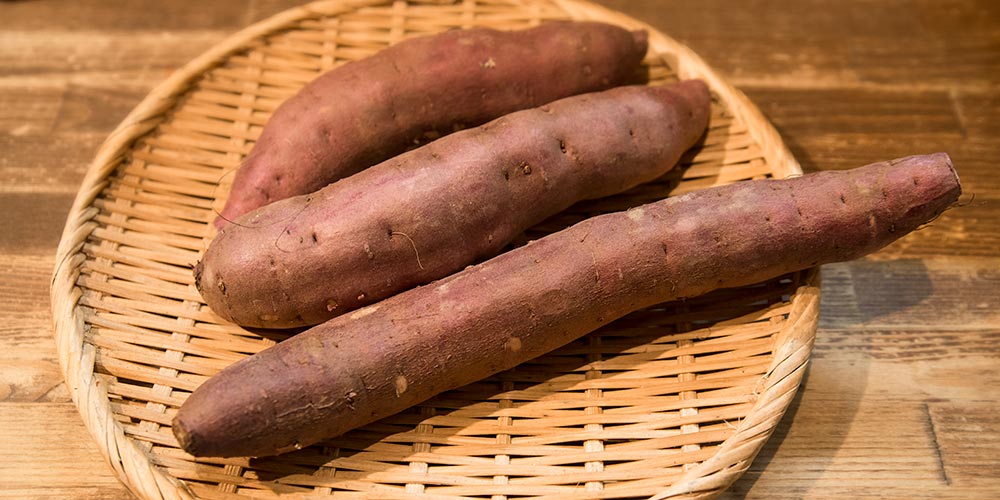Imo shochu is made from sweet potato and is the most popular style of shochu.
Most imo shochu comes from Kagoshima and Miyazaki in Kyushu. And the Izu Islands of Tokyo are another producer of imo shochu.

What Does Imo Shochu Taste Like?
Sweet potato shochu is known for its fruity, rich, and sometimes funky profile. Notes of fruitcake, citrus, fresh and dried flowers, and chestnut are common.
Atmospheric distillation is standard with sweet potato shochu. This produces a rich, fuller-bodied style. But some newer brands use vacuum distillation for a lighter, cleaner taste.
Differences in koji, sweet potato types, and manufacturing impact flavor profiles too. On the koji front, black koji tends to produce the richest, most aromatic, and most complex imo shochu. White koji shochu is often elegant, fruity, and restrained. Yellow koji is rarely used for shochu anymore, but it tends to make fruity, floral, and light imo shochu.

Satsuma Shochu
Kagoshima, which used to be called Satsuma, is the homeland of imo shochu.
Satsuma is a protected geographical indication. Only honkaku from Kagoshima (excluding Oshima and Amami), using Kagoshima-grown sweet potatoes as the primary ingredient, can use the term.
Check out Japan Sake and Shochu Makers Association for more info about Satsuma Shochu.
Major Types of Sweet Potato for Shochu
Kogane Sengan is the most popular sweet potato for shochu. Aya Murasaki, Murasaki Masari, Joy White, Beniazuma, and Shiroyutaka are other important varietals.
Famous Imo Shochu Brands
There are many famous brands of sweet potato shochu. The two most popular, based on sales volume, are Satsuma Shiranami and Kuro Kirishima.
Other noteworthy brands include Nishi Shuzo’s Hozan lineup, Satsuma Kuradashi, Ikkomon, and Kaido.